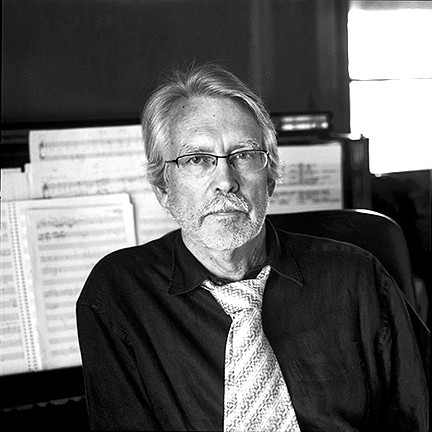
Imagine a particularly crowded junction lacking even the most basic of signals, and you might be able to picture the multiple intersections that come up when words meet music.
Most of the time, we listen to an opera or an art song as a whole. But that whole is really a sum of parts with complex – and sometimes contradictory – relationships.
The many-layered dynamic between composer and poet, and then between song and interpreter and performance and listener was the focus of a concert-lecture I attended on Wednesday evening at Williams College, a 15-minute drive south of my new home in Bennington, Vermont.
The star guest was American composer John Harbison, joined by poets Jessica Fisher and Louise Glück, as well as scholar and National Public Radio commentator Lloyd Schwartz representing the late Elizbeth Bishop.
Hosted jointly by the departments of English and Music at the college, the evening opened with a panel discussion that shone light into the frequent chasms between poet’s intention, the composer’s interpretation and the resulting setting.
Then the audience had the chance to experience the gap for themselves.
We had the printed texts to read ahead of time, Schwartz read each poem out loud, then we heard Harbison’s settings, vividly interpreted by mezzo Lynn Torgove and pianist Judith Gordon.
My pre-concert readings touched me one way, while Harbison’s settings came from a completely different place each and every time. Then there were the performances themselves, where Torgove and Gordon chose to highlight or underline passages in ways that were uniquely their own.
Glück was candid about how unlike her intentions Harbison’s settings were – “but I hope to understand them one day,” she smiled.
Harbison, on the other hand, made it clear that the songs should not be considered as somehow growing out of the original poetry but rather as entirely new entities with a shape, force and life of their own.
I had never considered this aspect of songwriting before in such concrete terms. As a critic, I listened to how the music related to the meaning of the text, without thinking that I, like every other listener and reader, including the composer, might come at the text with a different perspective.
How many of us have read the poems set by Franz Schubert or Richard Strauss separately from the music?
One effective example to draw on is “Clair de lune,” collected by poet Paul Verlaine in the first volume of his Fêtes galantes. Among the multiple settings, the best known are by Gabriel Fauré and Claude Debussy.
Verlaine’s poem reads:
Votre âme est un paysage choisi
Que vont charmant masques et bergamasques,
Jouant du luth et dansant, et quasi
Tristes sous leurs déguisements fantasques!
Tout en chantant sur le mode mineur
L’amour vainqueur et la vie opportune.
Ils n’ont pas l’air de croire à leur bonheur,
Et leur chanson se mêle au clair de lune,
Au calme clair de lune triste et beau,
Qui fait rêver, les oiseaux [dans]1 les arbres,
Et sangloter d’extase les jets d’eau,
Les grands jets d’eau sveltes parmi les marbres.
My quick translation:
Your soul is a chosen landscape
Populated with charming masques and bergamasques
Playing the lute and dancing, yet almost
Sad under their fantastical disguises.
All the while singing on the minor key
Of love the conqueror and a mercenary life,
They don’t seem to appreciate their blessings,
And their song mixes with the moonlight.
Under the calm light of a moon both beautiful and sad,
Which makes the birds in the trees dream
And the fountains weep for joy
The water jets among the marble stones.
Here, to keep the comparison fair are soprano Véronique Gens and pianist Roger Vignoles singing the vastly different settings by Debussy and Fauré:
John Terauds
- Classical Music 101: What Does A Conductor Do? - June 17, 2019
- Classical Music 101 | What Does Period Instrument Mean? - May 6, 2019
- CLASSICAL MUSIC 101 | What Does It Mean To Be In Tune? - April 23, 2019



